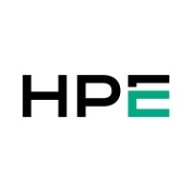

Red Hat OpenShift and High Performance Computing compete in cloud-native application development and computational tasks, respectively. The upper hand depends on the use case, with OpenShift favored in cloud scenarios and HPC in computational tasks.
Features: OpenShift supports containerization, automation, and scalability for enterprise applications. It is known for agility in deploying applications. HPC provides powerful computing capabilities, enabling extensive data calculations and simulations with high computational intensity.
Ease of Deployment and Customer Service: Red Hat OpenShift has a streamlined deployment process and robust customer support, making it accessible for application development teams. HPC deployment is more complex due to infrastructure needs, but it offers specialized support for managing high computational requirements.
Pricing and ROI: Red Hat OpenShift is known for competitive pricing and quick ROI due to efficient and rapid deployment. HPC involves higher initial setup costs but provides significant ROI for data-intensive computations. OpenShift's cost-effectiveness is prominent in cloud applications, while HPC's cost is justified where heavy computational lifting is necessary.
| Product | Market Share (%) |
|---|---|
| Red Hat OpenShift | 5.7% |
| High Performance Computing (HPC) | 3.4% |
| Other | 90.9% |

| Company Size | Count |
|---|---|
| Small Business | 17 |
| Midsize Enterprise | 4 |
| Large Enterprise | 40 |
High Performance Computing (HPC) enables efficient processing of large datasets and complex computations, driving advancements in a range of fields and supporting cutting-edge research.
HPC is integral for industries that require substantial computational power. Its ability to handle extensive calculations quickly facilitates advancements in scientific and engineering domains. The scalability and flexibility of HPC systems allow for tailored solutions that address specific computational challenges such as simulations and data analysis. As demand for processing power grows, HPC's architecture evolves to improve efficiency, speed, and accessibility. Users benefit from constant innovations that optimize system performance and energy usage, making HPC an adaptable and reliable choice for resource-intensive tasks.
What are the most important features of High Performance Computing (HPC)?Industries such as healthcare, finance, and weather forecasting implement HPC to manage data-intensive tasks. In healthcare, HPC supports genomic research by processing vast data swiftly. Financial services utilize it for risk analysis and real-time trading, while meteorology relies on its computational power for accurate weather predictions.
Red Hat OpenShift offers a robust, scalable platform with strong security and automation, suitable for container orchestration, application deployment, and microservices architecture.
Designed to modernize applications by transitioning from legacy systems to cloud-native environments, Red Hat OpenShift provides powerful CI/CD integration and Kubernetes compatibility. Its security features, multi-cloud support, and source-to-image functionality enhance deployment flexibility. While the GUI offers user-friendly navigation, users benefit from its cloud-agnostic nature and efficient lifecycle management. However, improvements are needed in documentation, configuration complexity, and integration with third-party platforms. Pricing and high resource demands can also be challenging for wider adoption.
What are the key features of Red Hat OpenShift?Red Hat OpenShift is strategically implemented for diverse industries focusing on container orchestration and application modernization. Organizations leverage it for migrating applications to cloud-native environments and managing CI/CD pipelines. Its functionality facilitates efficient resource management and microservices architecture adoption, supporting enterprise-level DevOps practices. Users employ it across cloud and on-premises platforms to drive performance improvements.
We monitor all Hybrid Cloud Computing Platforms reviews to prevent fraudulent reviews and keep review quality high. We do not post reviews by company employees or direct competitors. We validate each review for authenticity via cross-reference with LinkedIn, and personal follow-up with the reviewer when necessary.